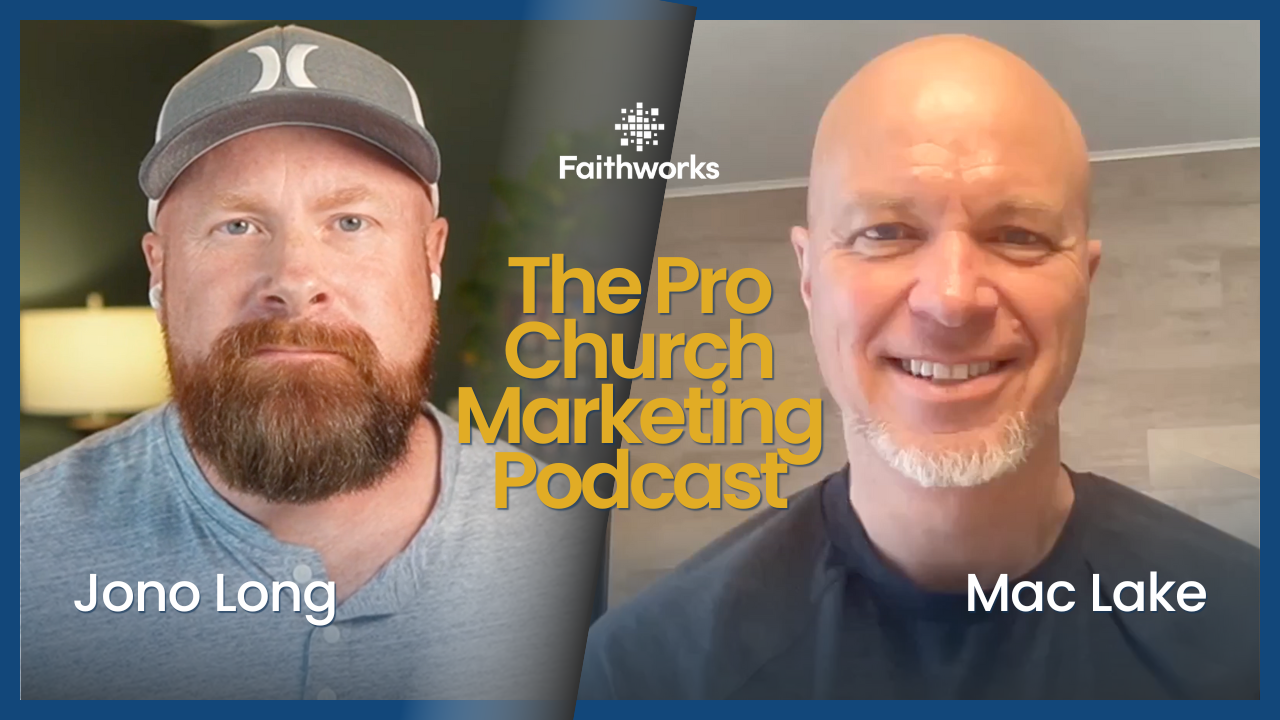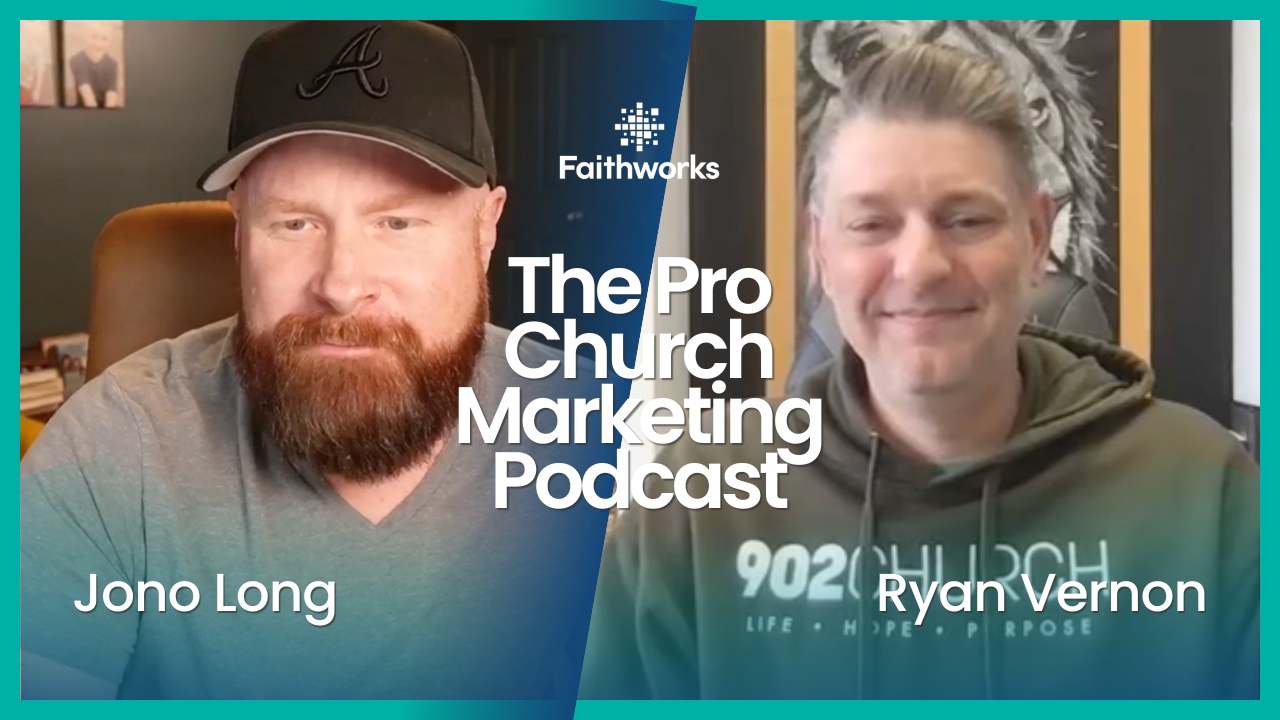Harnessing the Power of Video on Your Church or Non-Profit Website
In today's fast-paced digital landscape, attention spans are shorter, and visual content like video is increasingly popular as a means of conveying information and capturing audience interest. For non-profits and churches, harnessing the power of video content on your website can provide a highly impactful way to share your message, connect with your audience, and create memorable and engaging online experiences. At Faithworks Marketing, we understand the importance of incorporating compelling video content into your organization's digital strategy to maximize your online presence and drive user engagement.
In this blog content strategy, we will explore how to effectively utilize video on your church or non-profit website, discussing topics such as video best practices, tips for creating engaging videos, and proven strategies to increase viewer engagement and drive meaningful connections with your audience. By integrating video content into your website, you can create a dynamic, contemporary digital experience that appeals to new and returning visitors alike.
Our goal is to empower your organization to harness the power of video as a tool to not only inform and educate but also inspire and resonate with your online community. By following our strategic guidance and best practices, your organization can create dynamic video content that effectively showcases your mission, values, and impact in your community and beyond.
Faithworks Marketing is your trusted partner in crafting custom websites that incorporate a variety of engaging multimedia elements, including video. Our experienced team in Monroe is dedicated to delivering tailored website solutions for churches and non-profits, helping you create a lasting impact in the digital realm. Let's work together to enhance your online presence and foster a stronger connection with your audience through the power of video content.
Harnessing the Power of Video on Your Church or Non-Profit Website
To maximize the potential of video content on your church or non-profit website, it is essential to develop a comprehensive understanding of best practices and techniques for creating engaging videos. In this blog article, we will discuss four essential aspects of implementing video on your website and share insights into leveraging the power of video to enhance your online presence.
1. Best Practices for Producing High-Quality Videos
Creating high-quality videos is a crucial aspect of capturing your audience's attention and effectively conveying your message. Consider the following best practices when producing video content for your website:
- Plan your content: Before filming, develop a storyboard or script outlining the narrative, key messages, and visuals that will be included in your video.
- Invest in proper equipment: Use a quality camera, microphone, and lighting to ensure optimal video and audio quality. Investing in a tripod or stabilizing equipment can help minimize shaky footage.
- Edit thoughtfully: Edit your video to create a polished and professional final product, adjusting the colors, sound, and transitions for maximum impact.
- Opt for brevity: Keep your video concise and focused, aiming for a runtime between two and five minutes. Longer videos may lose viewer interest, while shorter videos can leave your audience wanting more.
Following these best practices can help ensure that your video content is visually appealing, engaging, and effectively communicates your intended message.
2. Tips for Creating Engaging Video Content
To encourage viewers to watch and share your video, it is essential to create content that captures their interest and resonates with your target audience. Try the following tips for developing engaging video content:
- Tell a compelling story: Craft the narrative of your video to convey the human impact of your organization's work, showcasing personal anecdotes, testimonials, or stories.
- Use dynamic visuals: Implement a variety of visual elements, such as images, illustrations, or animations, to maintain viewer interest throughout your video.
- Incorporate powerful music: Choose background tracks that complement your content and evoke emotion in your viewers while respecting copyright and licensing regulations.
- Include captions: Make your video accessible to your entire audience by providing accurate, synchronized captions for those who may be hard of hearing or prefer watching videos without sound.
By incorporating these tips into your video production process, you can create content that is not only visually appealing but also effective at engaging your audience and encouraging interaction.
3. Effective Strategies to Drive Viewer Engagement
Once you have produced a captivating video, it is essential to implement strategies that encourage viewer engagement and drive results for your organization. Consider these tactics to maximize viewer interactions:
- Embed a clear call-to-action (CTA): Include a specific, measurable action for the viewer to take after watching your video, such as donating, signing up for a newsletter, or sharing your content on social media.
- Utilize video hosting platforms: Host your videos on platforms like YouTube or Vimeo, making them easily accessible, shareable, and embeddable on your website and social media channels.
- Optimize your video for sharing: Create engaging video titles, descriptions, and thumbnail images that intrigue viewers and encourage them to share your content with their networks.
Implementing these strategies can help amplify your video's reach, driving increased engagement and results for your church or non-profit organization.
4. Measuring the Impact of Video Content on Your Website
To assess the effectiveness of your video content and identify areas for improvement, it is crucial to track and monitor various performance metrics. Consider examining the following data points:
- Video view count: Track the overall number of views for your video to gauge its popularity and reach.
- Watch time: Determine the average amount of time viewers spend watching your video, which can indicate how engaging and compelling your content is to your audience.
- Engagement metrics: Analyze click-through rates, video shares, and comments to understand how effectively your video encourages user interaction.
- Conversion rate: Monitor the percentage of viewers who complete your designated CTA, such as making a donation or subscribing to your newsletter.
By evaluating the performance of your video content, you can make informed decisions regarding future video production and strategically optimize your content to better engage your audience.
Conclusion
The power of video content on your church or non-profit website cannot be overstated, as it provides a dynamic, engaging, and impactful medium that can both inform and inspire your audience. By adhering to best practices, producing engaging content, implementing effective engagement strategies, and regularly assessing the impact of your videos, you can harness the full potential of video on your website and strengthen your online presence.
Faithworks Marketing is your trusted partner for creating custom websites that incorporate a variety of engaging multimedia elements, including video content. Our expert team understands the unique needs and goals of churches and non-profits and is committed to delivering tailored
digital marketing for churches
and non-profits that enhance your online presence and foster stronger connections with your audience. Together, we can utilize the power of video to share your mission, values, and impact with the digital world.
Latest Posts












